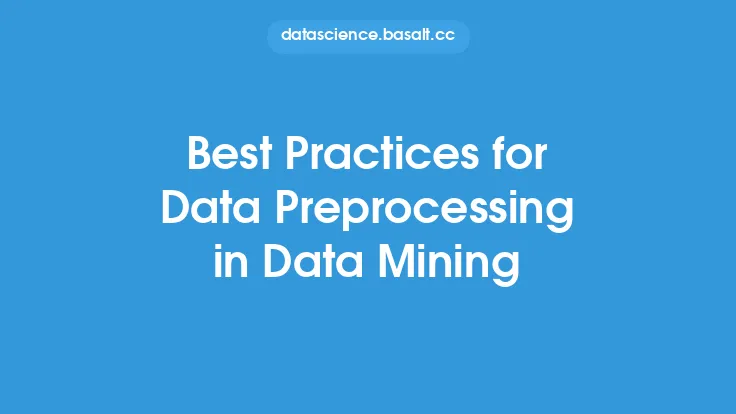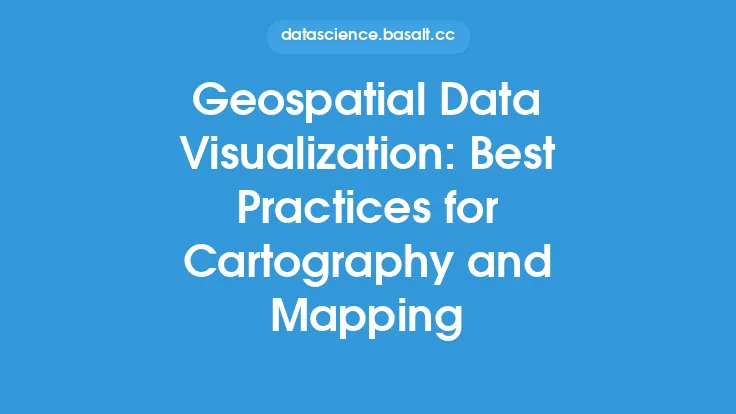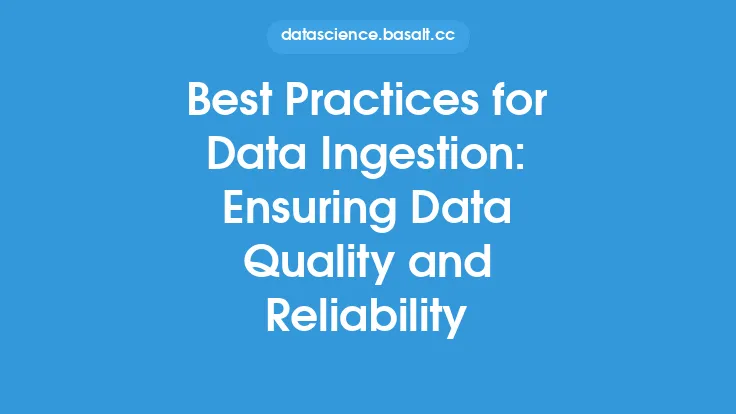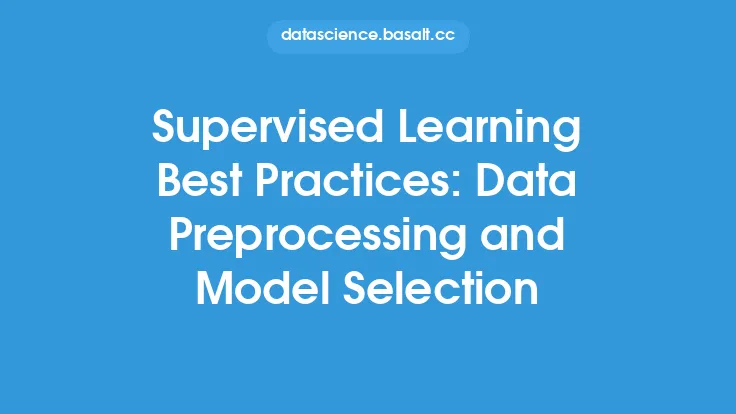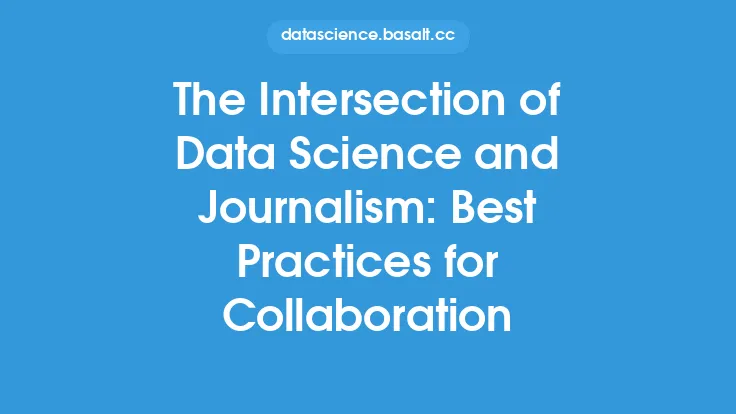Data cleaning and preprocessing are essential steps in the data analysis process, as they ensure that the data is accurate, complete, and consistent. These steps are crucial in preparing the data for analysis, modeling, and visualization, and can significantly impact the quality and reliability of the results. In this article, we will discuss the best practices for data cleaning and preprocessing, highlighting the importance of these steps and providing guidance on how to perform them effectively.
Introduction to Data Cleaning
Data cleaning involves identifying and correcting errors, inconsistencies, and inaccuracies in the data. This step is critical in ensuring that the data is reliable and trustworthy, and that any analysis or modeling performed on the data is accurate and meaningful. Data cleaning can be a time-consuming and labor-intensive process, but it is essential in preparing the data for analysis. Some common data cleaning tasks include handling missing values, removing duplicates, and correcting data entry errors.
Data Preprocessing Techniques
Data preprocessing involves transforming the data into a format that is suitable for analysis. This step can include a range of techniques, such as data normalization, feature scaling, and data transformation. Data normalization involves scaling the data to a common range, usually between 0 and 1, to prevent features with large ranges from dominating the analysis. Feature scaling involves scaling the data to have zero mean and unit variance, which can improve the performance of some machine learning algorithms. Data transformation involves converting the data into a different format, such as converting categorical variables into numerical variables.
Data Quality and Integrity
Data quality and integrity are critical aspects of data cleaning and preprocessing. Data quality refers to the accuracy, completeness, and consistency of the data, while data integrity refers to the reliability and trustworthiness of the data. Ensuring data quality and integrity involves verifying the data against a set of rules and constraints, such as checking for missing values, duplicates, and data entry errors. It also involves validating the data against external sources, such as checking the data against a set of known values or ranges.
Data Profiling and Exploration
Data profiling and exploration involve examining the data to understand its distribution, patterns, and relationships. This step is critical in identifying errors, inconsistencies, and inaccuracies in the data, as well as in understanding the underlying structure and relationships in the data. Data profiling involves summarizing the data using statistical measures, such as means, medians, and standard deviations, while data exploration involves visualizing the data using plots and charts to identify patterns and relationships.
Automated Data Cleaning and Preprocessing
Automated data cleaning and preprocessing involve using software tools and algorithms to perform data cleaning and preprocessing tasks. These tools can significantly reduce the time and effort required to perform these tasks, and can also improve the accuracy and consistency of the results. Some common automated data cleaning and preprocessing tools include data quality software, data integration software, and machine learning algorithms. These tools can perform tasks such as data profiling, data validation, and data transformation, and can also identify and correct errors and inconsistencies in the data.
Best Practices for Data Cleaning and Preprocessing
To ensure that data cleaning and preprocessing are performed effectively, it is essential to follow best practices. Some best practices include:
- Verifying the data against a set of rules and constraints to ensure data quality and integrity
- Using automated tools and algorithms to perform data cleaning and preprocessing tasks
- Examining the data to understand its distribution, patterns, and relationships
- Transforming the data into a format that is suitable for analysis
- Documenting the data cleaning and preprocessing steps to ensure transparency and reproducibility
- Continuously monitoring and updating the data to ensure that it remains accurate and consistent over time.
Tools and Technologies for Data Cleaning and Preprocessing
There are a range of tools and technologies available for data cleaning and preprocessing, including:
- Data quality software, such as Trifacta and Talend
- Data integration software, such as Informatica and Microsoft SQL Server Integration Services
- Machine learning algorithms, such as decision trees and random forests
- Programming languages, such as Python and R
- Data visualization tools, such as Tableau and Power BI
- Big data platforms, such as Hadoop and Spark
Conclusion
Data cleaning and preprocessing are critical steps in the data analysis process, and are essential in preparing the data for analysis, modeling, and visualization. By following best practices and using automated tools and algorithms, data cleaning and preprocessing can be performed efficiently and effectively, ensuring that the data is accurate, complete, and consistent. As data continues to play an increasingly important role in business and decision-making, the importance of data cleaning and preprocessing will only continue to grow, making it essential for organizations to invest in these steps to ensure the quality and reliability of their data.
